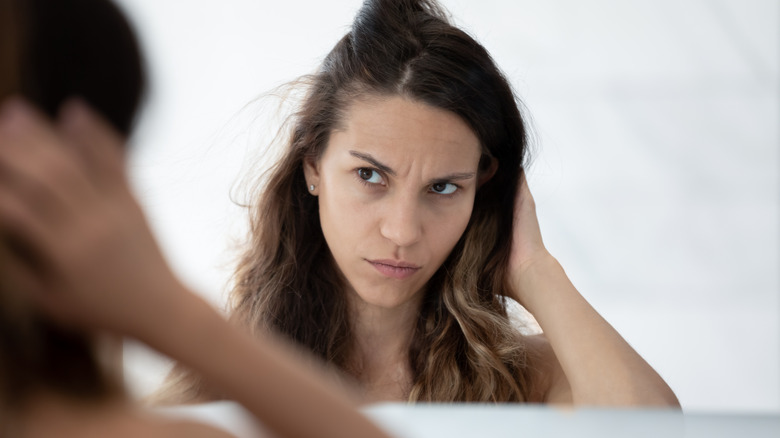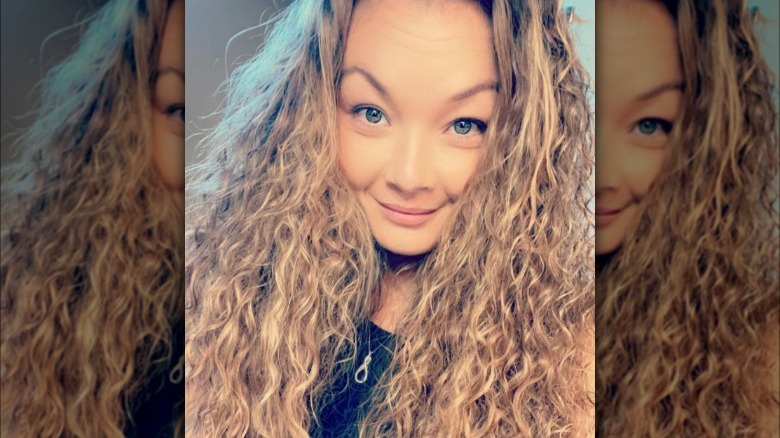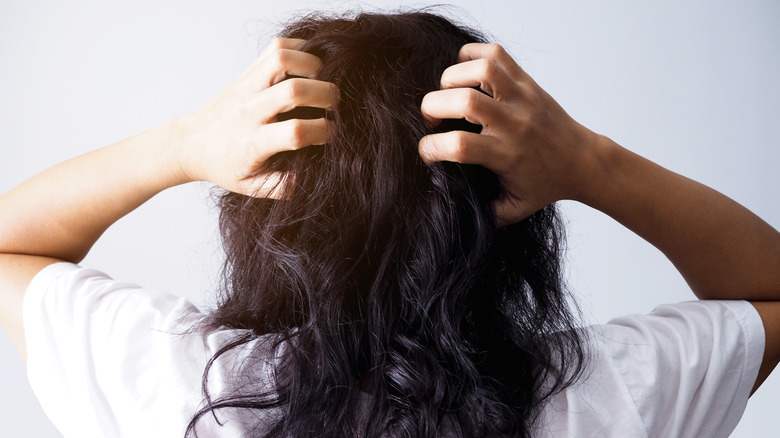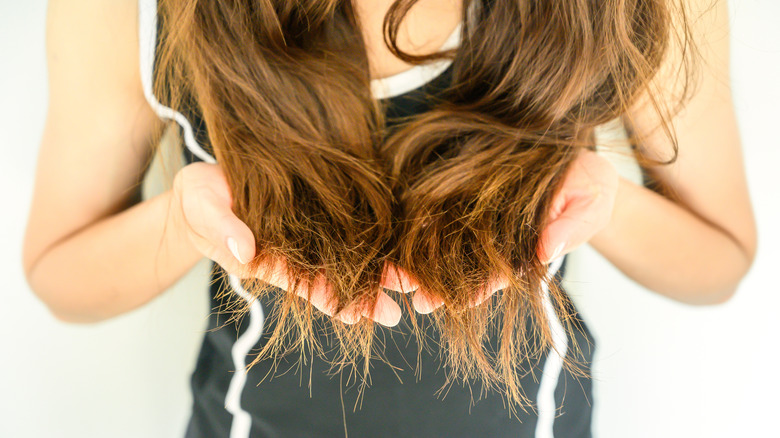Hair Seem Untamable? Learn How To Style According To Your Frizz Type
For something that automatically grows on its own from your head, hair is incredibly complex. There's a huge variation in everything to do with hair, from the thickness and texture of each individual strand, to the color and whether or not it hangs naturally wavy, straight, or curly. To make matters more confusing, our hair changes on the regular throughout our lives. So, every few years from toddlerhood on up, it's likely a person's hair will have just enough new and unique properties to disrupt one's hair care routine.
But more than anything else, most people's No. 1 hair concern is frizz, which occurs when hairs spring around in all different directions rather than sticking together as they should. Frizz control isn't something you can powwow successfully with friends about, since your hair is likely completely different than theirs. Fortunately, there are some easy ways to tame frizzy hair, as long as you fully know and understand your individual frizz type.
Curly frizz
Naturally curly hair can be absolutely stunning, but it can also devolve into a frizzy mess if not treated properly. Avoid damaging the hair on the front end by using a wide-toothed comb instead of a traditional hair brush. Also, don't wash your hair every day because this will only exacerbate the frizzies. Those with really thick or coarse curly hair can easily go at least a week between washes, while those with medium curls can wait three or so days in between.
When you do wash your hair, keep your shower short and use hot water sparingly. Then, use an old cotton t-shirt or cotton towel to gently scrunch it dry, as aggressively rubbing the hair dry will only up the frizz factor. Make sure to only use hair products such as shampoo and conditioners that are specifically formulated for the unique needs of curly hair. Find a good quality hair balm to apply while hair is still damp, then scrunch it in gently. Then, allow it to either air dry, or use a diffuser to make those curls achieve their fullest bounce. Once dry, apply a smoothing serum anywhere you notice wayward strands. Sticking with this protocol should help curly hair fall back in line pretty quickly!
All-over frizz
This type of frizz doesn't affect the entire head of hair, so much as it hits the surface layers, but this phenomenon can ruin an otherwise sleek hairstyle. All-over frizz usually occurs because the hair is too dry.
Keep your hair hydrated by using products designed to moisturize your particular hair type. Also, steer clear of products containing sulfates because, although they are helpful at getting rid of dirt and buildup, they also clear out the natural oils your hair needs to stay nice and luscious. Even if you're using the right products, once again, remember not to wash your hair too frequently. Then, if you're prone to flyaways, go ahead and invest in a couple of hair care products designed to smooth them out, such as a finishing spray or hair lotion that can be applied while your hair is still damp. Both of these should take away some of the power that frizz has over your mane.
Big-hair frizz
Everyone has that friend whose hair swells to five times its normal size whenever a rainstorm blows in. Those people with naturally thick, textured hair are simply extra affected by humidity levels. This is especially true for people whose hair refuses to fall into a defined category, whether curly, wavy, or straight. Anyone like this is, therefore, prone to big-hair frizz, which can get out of control pretty quickly.
Fortunately, big-hair frizz can be minimized with the help of some specifically-formulated products and other hair care methods. Hair like this is once again best served by not washing too often (are you noticing a pattern here?) and should be brushed or combed sparingly. When it does get washed, use some sort of leave-in conditioning treatment to help it stay hydrated to the nth degree. Again, never ever towel dry it too much, and try not to touch your hair either, as this will encourage it to get excessively bigger — and faster.
Frizzy ends
Honestly, this is the easiest type of hair frizz to solve, as it's more of a maintenance issue. Avoid frizzy ends altogether by hitting the salon for regular trims (about every six to eight weeks). All of those color treatments and hot hair tools build up over time, which is why these oldest bits of hair wind up looking dried up and frizzy.
If you start to notice split ends, this means it's past the time to refresh those ends, so make an appointment post-haste. The average person can keep ends healthier for longer by minimizing the use of hot hair tools and by using a heat protectant when they are necessary. Also, go as long as possible between color treatments because they do more damage to your hair than most people realize. There are also products specifically designed to treat ends, so those are always an option as well.




